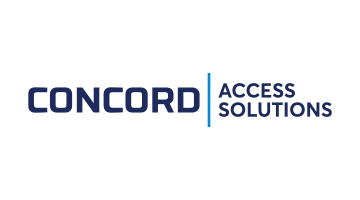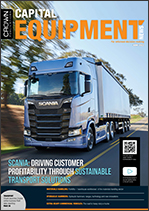 Scania: Driving customer profitability through sustainable transport solutions
Scania: Driving customer profitability through sustainable transport solutions
On the cover: Scania Southern Africa MD Erik Bergvall, who recently took up the position, says the fuel crisis has affected almost every country around the globe and that South Africa is no exception when it comes to the skyrocketing price of fuel, which calls for trucks with, first and foremost, economical fuel consumption.
“South Africans also feel the rising fuel prices and if ever there was a time to make sure the truck you choose is not fuel greedy, it is now,” he says.
Internationally, Scania enjoys recognition as the truck with the best fuel consumption and especially with the New Truck Generation series that was launched about three years ago, Scania has set a standard that is difficult to beat.
The company has won the Green Truck Award in Europe for six consecutive years. However, good fuel consumption and low carbon emissions are not all that it focuses on.
“Scania’s plan, which is also my mission for the near future, is very clear: by 2025, our company’s carbon footprint should decrease by 50% compared to 2015 and the footprint of our vehicles on the road by 20%.
“My goal is to lead this transition to sustainable energy use in southern Africa,” says Bergvall.
Forklifts – ‘warehouse workhorses’ of the materials handling sector
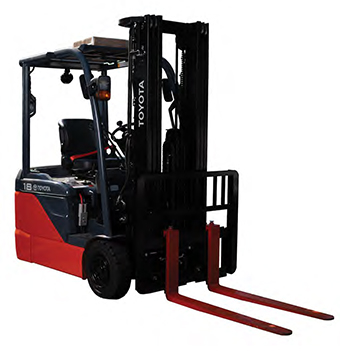 Discussing the various types of forklift in the market, Mishen Naidoo, engineering/solutions manager at Manitou Southern Africa says industrial forklifts are used mainly in warehouses and for transporting goods on smooth surfaces while rough terrain forklifts are used for outdoor applications, particularly on uneven, rough terrain.
Discussing the various types of forklift in the market, Mishen Naidoo, engineering/solutions manager at Manitou Southern Africa says industrial forklifts are used mainly in warehouses and for transporting goods on smooth surfaces while rough terrain forklifts are used for outdoor applications, particularly on uneven, rough terrain.
“These machines have more powerful engines than their industrial counterparts, so they can reach greater speeds with better manoeuvrability and are used for transporting heavy loads across rugged terrain.”
Electric forklifts are typically used for indoor warehousing applications, while truck mounted forklifts are designed to be attached to a truck for easy transportation to remote sites.
CFAO Equipment SA product manager Brent Light makes the distinction between 3-wheel electric; electric and internal combustion engine (ICE) forklifts.
He says 3-wheel electric forklifts are nimble and manoeuvrable, making them perfect for warehouse applications.
“The technologies on electric forklifts have come a long way, meaning electric units are now able to handle the majority of applications that were traditionally dominated by ICE units.”
Hydraulic hammers: ranges, technology and new innovations
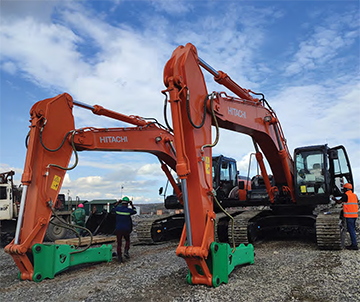 Often used in mining, quarries, excavation and demolition, hydraulic breakers are percussion hammers powered by auxiliary hydraulic systems from carrier equipment such as excavators. These attachments are mostly used where the job at hand is too demanding for jackhammers or in areas where blasting is prevented by safety or environmental concerns.
Often used in mining, quarries, excavation and demolition, hydraulic breakers are percussion hammers powered by auxiliary hydraulic systems from carrier equipment such as excavators. These attachments are mostly used where the job at hand is too demanding for jackhammers or in areas where blasting is prevented by safety or environmental concerns.
According to Tecman South Africa MD Darrell Bendall, the company offers two ranges of hydraulic hammer, the TMB and TMG series.
“The Tecman TMB Series,” he says, “is a fully hydraulic mining hammer range designed to operate in heavy duty mining applications. This line of hammers has been designed for use primarily with the Tecman rock breaker boom range in the production mining environment.” Ranging from 250 kg to 7000 kg, the TMB range will operate on 4 t to 100 t excavators.
The road to heavy-duty e-trucks
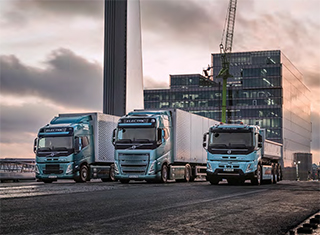 A report published by Frost & Sullivan back in 2018, Executive Analysis of Electric Truck Market, Forecast to 2025, found that the electric truck market would grow significantly by 2025. At the time, it noted that electric trucks would not reach cost parity with their diesel or natural gas counterparts by that time, unless supported by incentives and subsidies.
A report published by Frost & Sullivan back in 2018, Executive Analysis of Electric Truck Market, Forecast to 2025, found that the electric truck market would grow significantly by 2025. At the time, it noted that electric trucks would not reach cost parity with their diesel or natural gas counterparts by that time, unless supported by incentives and subsidies.
Depending on the truck segment, the report expected electric trucks to make economic sense only post 2019 for light commercial vehicles (less than 6 t GVW), post 2022 for medium duty (MD) trucks (greater than 6 t to 16 t GVW), and post 2024 for heavy duty (HD) trucks (greater than 16 t GVW).
At the time, battery electric trucks in heavy-duty applications were still deemed an ambitious project, with battery cost and performance restrictions the main drawbacks.
However, according to Transport & Environment, Europe’s leading transport campaign group, battery-powered trucks, whose main cost is their large battery, are about to enter a perfect storm. Automotive battery production is now experiencing a self-reinforcing cost dynamic following the rapidly developing scale in the passenger car segment. This trend will now spill over to trucks.
RDTs – leading the shift towards the ‘mine of the future’
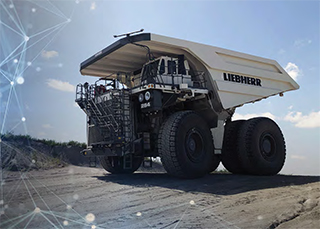 As technology continues to change the face of mining, automation, digitalisation and electromobility are reinventing processes, transforming mining in ways and at a rate not seen in over a hundred years. While the building blocks for automation have been in place for decades, the use of automated systems in mining has only expanded dramatically in the past decade.
As technology continues to change the face of mining, automation, digitalisation and electromobility are reinventing processes, transforming mining in ways and at a rate not seen in over a hundred years. While the building blocks for automation have been in place for decades, the use of automated systems in mining has only expanded dramatically in the past decade.
There is also a common understanding that ESG (Environmental, Social and Governance) represents one of the mining industry’s most significant opportunities for long-term value creation, building trust and sustainable growth. Consequently, miners are engaging with various stakeholders, including original equipment manufacturers (OEMs), to ‘bake’ ESG into the core of their strategies.
For years, forward-thinking mining companies have been investigating the electric route to decarbonise their operations and reduce their operating costs. The early days saw the rollout of trolley assist technology. Offering significant productivity benefits, trolley assist has been considered for decades.
Capital Equipment Group launches advanced equipment for high productivity
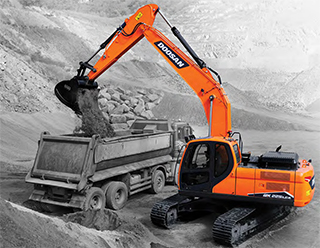 “Despite challenging economic conditions, global supply issues and escalating costs – which were exacerbated by the negative effects of the COVID-19 pandemic and ongoing strike action – we are pleased that CEG has maintained its consistent record of strong performance in a highly competitive sector,” says Tony Sinclair, CEO, Capital Equipment Group.
“Despite challenging economic conditions, global supply issues and escalating costs – which were exacerbated by the negative effects of the COVID-19 pandemic and ongoing strike action – we are pleased that CEG has maintained its consistent record of strong performance in a highly competitive sector,” says Tony Sinclair, CEO, Capital Equipment Group.
“Through our local and overseas CEG companies – HPE Africa, DISA Equipment (trading as Doosan), ESP, Criterion Equipment, Shamrock Handling Concepts and the latest acquisition of KMP Brand in the UK, which is a specialist supplier of aftermarket engine spares worldwide – we continue our strategy to consolidate our position in construction and spare parts, by working closely with customers to ensure our equipment meets exact requirements.”
CEG companies introduce new machines, accessories and parts on a regular basis to enable customers to keep abreast with the latest global construction trends, in terms of advanced technologies, fuel efficiency, precision operation and enhanced safety on site.
“We ensure our equipment complies with stringent international quality certification, giving the local market assurance of the finest machine designs and impeccable manufacturing standards for high productivity, environmental protection, minimal maintenance and extended service life,” says Sinclair.





